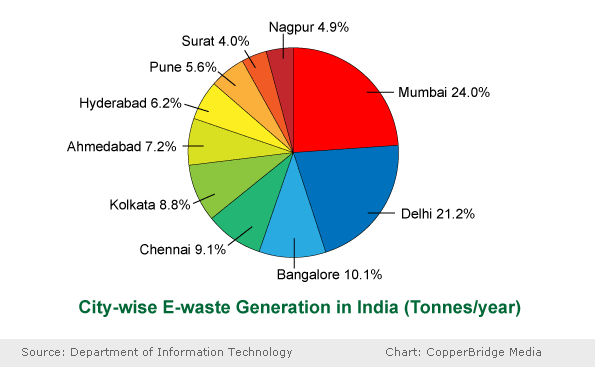#1. What is e-waste?
- Electronic waste or e-waste describes discarded electrical or electronic devices. Used electronics
which are destined for reuse, resale, salvage, recycling or disposal are also considered e-waste.
#2. Why its disposal is necessary?
- Informal processing of e-waste in developing countries can lead to adverse human health effects
and environmental pollution.
#3. Where to dispose off our e-waste?
- Since electronic waste is subject to India’s hazardous waste regulations, it must be reused,
recycled, or disposed of properly. Please do not put these items in the garbage or curbside
recycling bins.
#4. What is the environmental impact of e-waste?
- Liquid and atmospheric releases end up in bodies of water, groundwater, soil, and air and therefore
in land and sea animals – both domesticated and wild, in crops eaten by both animals and human,
and in drinking water.
#5. How is it harmful to human health?
- Electronic products are a complex mixture of several hundred tiny components, many of which
contain deadly chemicals. These chemicals are a strain on human health and the environment.
Most of the components in electronic devices contain lead, cadmium, mercury, PVCs, brominated
flame retardants (BFRs), chromium, beryllium etc., Televisions, video and computer monitors use
cathode ray tubes (CRTs), which have significant amounts of lead.
#6. What gets recycled from scrapped electronics?
- If managed correctly, the materials that make up old electronics can be recycled safely and securely
and converted into new base commodities that can be put back into productive use in a new device
or product. Common materials include base ferrous metals (steel), non ferrous metals such as
aluminum, lead and copper, precious metals such as gold, silver and palladium, many families of plastics,
glass, and rubber. Hazardous materials can also be safely recovered and recycled including such items
as mercury or lead, heavy metals such as lithium and cadmium found in batteries, ink/toner and even
ethylene glycol as a coolant.
#7. What’s the difference between recycling and reuse?
- Recycling refers to the recovery of the materials used in the manufacture of electronic devices (e.g., gold,
mercury, copper, aluminum, plastic and glass), which can then be used in the manufacture of new devices,
reducing the consumption of non-renewable resources. Responsible recycling also ensures that these
materials, some of which are extremely toxic, do not find their way into landfills to cause harm to people
or the environment.
Reuse refers to the practice of removing working parts from retired electronic devices for resale or for
use as replacement parts to refurbish defective devices. Those parts may include disc drives, memory
chips and other components that can retain data and requires complete data wiping using a Department
of Defence grade data sanitization software.
